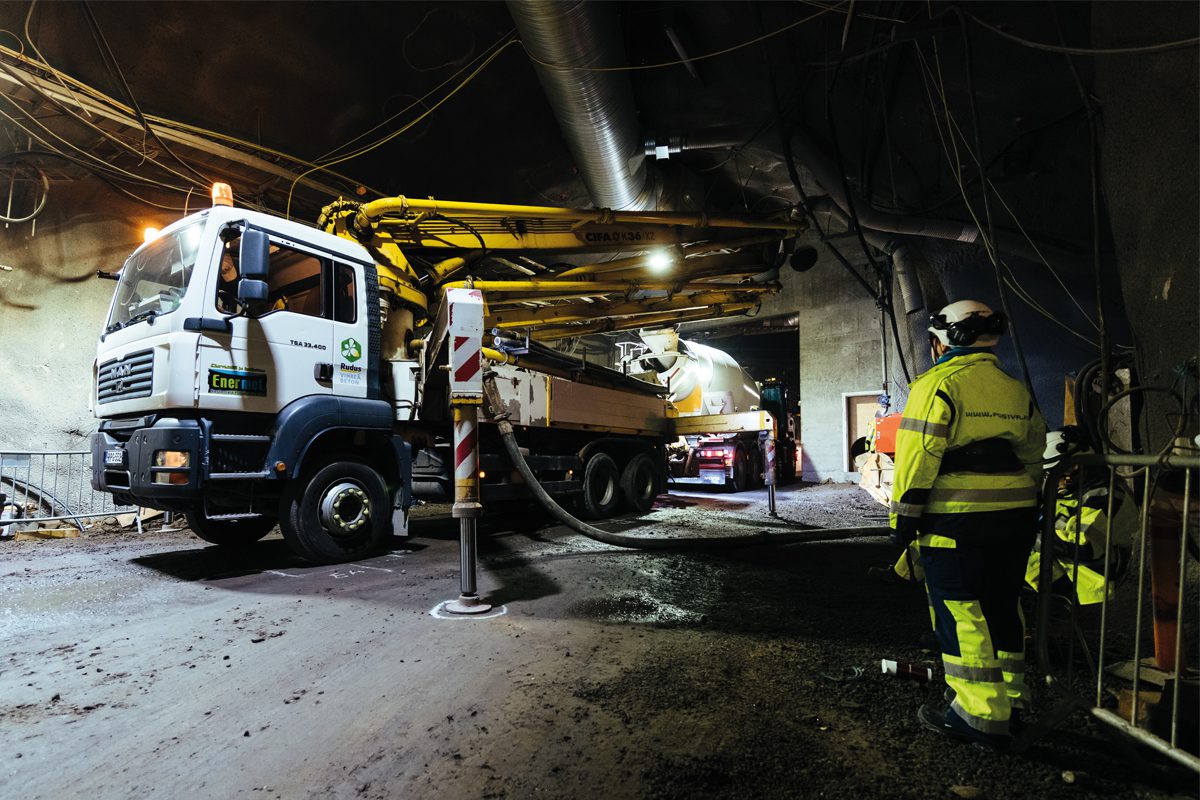
Preparations are underway to start the disposal of spent nuclear fuel in the Finnish bedrock next year, as the first place in the world to implement underground storage of high-level nuclear waste. The storage site is at Olkiluoto in Eurajoki, southwest Finland (image credit: Posiva).
After use, nuclear fuel becomes strongly radiating and dangerous waste. It contains a large amount of uranium and plutonium, which are also important ingredients in nuclear weapons. All these materials must be intact when the fuel rods are stored in their final deposit, presenting a requirement for meticulous and dependable measurement prior to deposition.
The measurement challenge has been the topic of a doctoral dissertation by Riina Virta, to be titled: “Gamma tomography of spent nuclear fuel for geological repository safeguards”.
“This way, we can be sure of what is being deposited in the bedrock, and that all nuclear materials will remain in peaceful use,” said Virta, a visiting researcher at the University of Helsinki.
All the important information must be gathered before the final disposal. The measurements must also be stored in a way that will be accessible and understandable to human beings for thousands, even hundreds and thousands of years.
For her doctoral thesis, Riina has studied methods of measurement suitable for use with nuclear waste, in work completed at the University of Helsinki in cooperation with the Helsinki Institute of Physics (HIP). She also works as an inspector in the nuclear materials safeguards section of the Radiation and Nuclear Safety Authority.
Looking inside with a gamma camera
In her thesis work, Riina developed an imaging method called passive gamma emission tomography (PGET), which measures the gamma radiation emitted by spent nuclear fuel. Nuclear fuel consists of rods, a few metres long and containing uranium, which are gathered into an assembly to act as a fuel element. The PGET instrument can produce an exact cross-section image of the fuel assembly.
The cross-section image allows us to check that the assembly still retains all the rods. The challenging thing with this method is that the fuel dampens the radiation very efficiently.
“In practice, the radiation from the middle of the assembly just barely reaches the detector, i.e. the ‘camera’. We wanted to fix this problem in our research.”
The image quality was improved by developing the collection of data and using that data more wisely. The method was also developed so that the instrument can be used not just in water but also in air. This makes it adaptable to the Finnish plants taking care of the final disposal. The research also developed software tools to make it easier to apply the method.
The performance of the method was proven with the help of an extensive library of field measurements carried out in Finnish nuclear power plants.
“This means the method has been studied in detail and found to work well, and now we are just waiting for the operations of final disposal to start in Olkiluoto,” said Virta.
- SEO Powered Content & PR Distribution. Get Amplified Today.
- PlatoData.Network Vertical Generative Ai. Empower Yourself. Access Here.
- PlatoAiStream. Web3 Intelligence. Knowledge Amplified. Access Here.
- PlatoESG. Carbon, CleanTech, Energy, Environment, Solar, Waste Management. Access Here.
- PlatoHealth. Biotech and Clinical Trials Intelligence. Access Here.
- Source: https://envirotecmagazine.com/2024/06/02/preparations-begin-for-underground-nuclear-waste-storage-in-finland/




